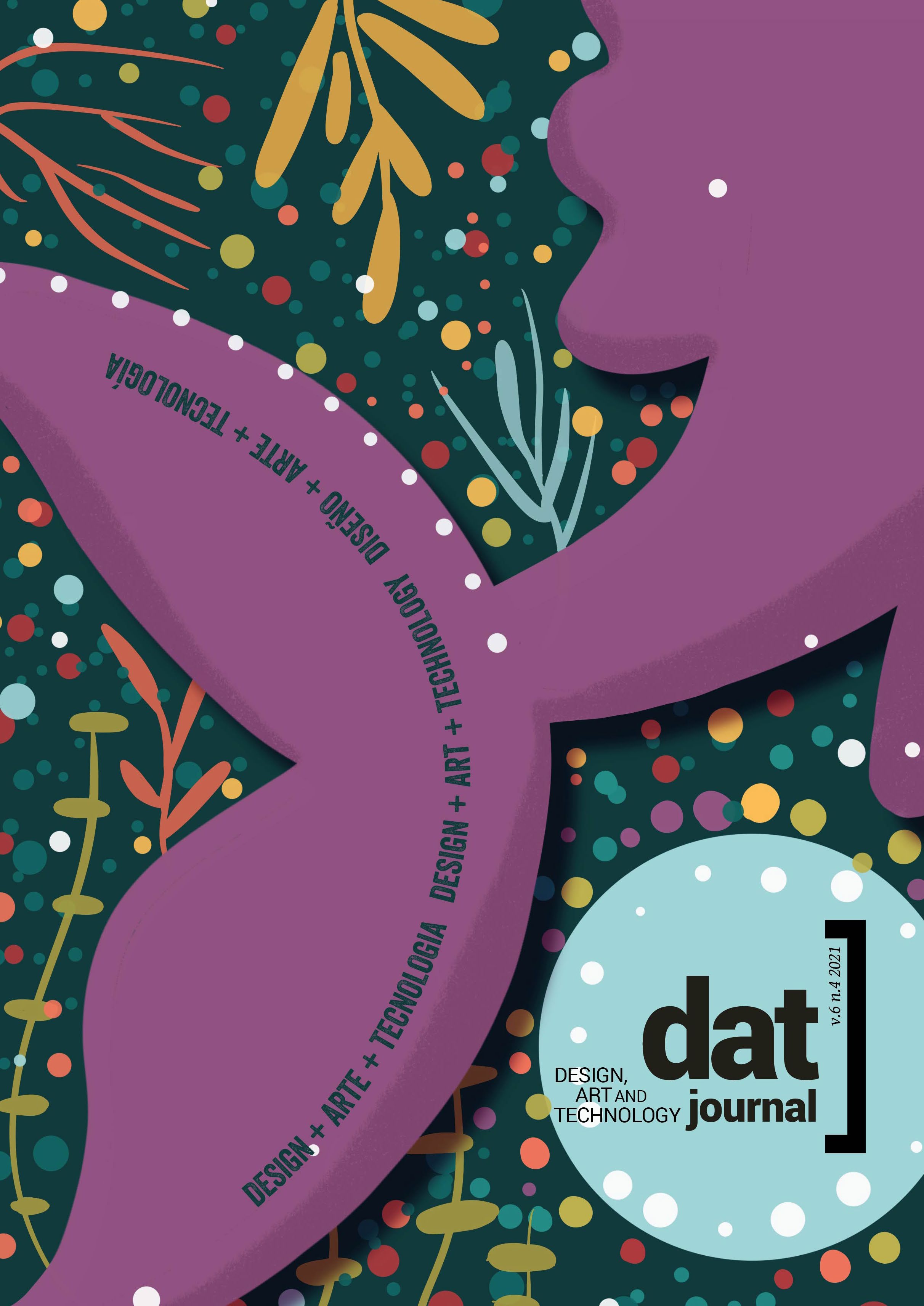A Realidade aumentada na prática de exercícios físicos
DOI:
https://doi.org/10.29147/datjournal.v6i4.508Palavras-chave:
Realidade Aumentada, Atividades Físicas, Revisão de LiteraturaResumo
Diante da pandemia do novo coronavírus, importam iniciativas capazes de adaptar-se ao isolamento social e às tecnologias de operação remota. Entre as tecnologias emergentes, a Realidade Aumentada (RA) permite interação entre o mundo real e virtual, auxiliando inclusive, pessoas a terem uma vida mais saudável. O artigo investiga como a RA tem sido utilizada para orientar pessoas na realização de atividade físicas e se dá pela prospecção em bases de dados internacionais para visualizar a abordagem da temática. Os resultados mostraram dois grupos de aplicações em RA: a gamificação, protagonizada pelo jogo Pokémon Go; e a reabilitação, com aplicações para recuperação de pessoas com perda muscular. Constata-se predomínio de publicações originadas nos Estados Unidos e Reino Unido, conforme mecanismo de busca e string definida para realização da pesquisa de prospecção nas coleções de periódicos. As informações coletadas auxiliarão na definição de funcionalidades que poderão ser utilizadas em aplicações em RA.
Downloads
Referências
BOULOS, M. N. K. et al. From urban planning and emergency training to Pokémon Go: applications of virtual reality GIS (VRGIS) and augmented reality GIS (ARGIS) in perso¬nal, public and environmental health. International Journal of Health Geographics, 2017.
CALABUIG-MORENO, F., GONZÁLEZ-SERRANO, M. H., FOMBONA, J., & GARCÍA-TASCÓN, M. (2020). The emergence of technology in physical education: A general bibliometric analysis with a focus on virtual and augmented reality. Sustainability, 12(7), 1–23. ht¬tps://doi.org/10.3390/su12072728 DOI: https://doi.org/10.3390/su12072728
CHEN, P. J., PENN, I. W., WEI, S. H., CHUANG, L. R., & SUNG, W. H. (2020). Augmented reality¬-assisted training with selected Tai-Chi movements improves balance control and incre¬ases lower limb muscle strength in older adults: A prospective randomized trial. Journal of Exercise Science and Fitness, 18(3), 142–147. https://doi.org/10.1016/j.jesf.2020.05.003 DOI: https://doi.org/10.1016/j.jesf.2020.05.003
DA GAMA, A. E. F. et al. MirrARbilitation: A clinically-related gesture recognition inte¬ractive tool for an AR rehabilitation system. Computer Methods and Programs in Biome¬dicine, v. 135, p. 105–114, 2016. DOI: https://doi.org/10.1016/j.cmpb.2016.07.014
ESCARAVAJAL-RODRÍGUEZ, J. C. Pokémon GO and its Influence on Spanish Facebook Users. Apunts. Educación Física y Deportes, Julho-Setembro 2018. 38-49. DOI: https://doi.org/10.5672/apunts.2014-0983.es.(2018/3).133.03
HOSSAIN, M. S. et al. AR-based serious game framework for post-stroke rehabilitation. Multimedia Systems, v. 22, n. 6, p. 659–674, 2016. DOI: https://doi.org/10.1007/s00530-015-0481-6
JEON, S., & KIM, J. (2020). Effects of augmented-reality-based exercise on muscle para¬meters, physical performance, and exercise self-efficacy for older adults. Internatio¬nal Journal of Environmental Research and Public Health, 17(9). https://doi.org/10.3390/ ijerph17093260 DOI: https://doi.org/10.3390/ijerph17093260
JETTER, JÉRÔME, EIMECKE, J., & RESE, A. (2018). Augmented reality tools for industrial applications: What are potential key performance indicators and who benefits? Com¬puters in Human Behavior, 87(May), 18–33. https://doi.org/10.1016/j.chb.2018.04.054 DOI: https://doi.org/10.1016/j.chb.2018.04.054
KOGAN, L. et al. A pilot investigation of the physical and psychological benefits of playing Pokémon Go for dog owners. Computers in Human Behavior, n. 76, 2017. 431- 437. DOI: https://doi.org/10.1016/j.chb.2017.07.043
MA, B. D. et al. Pokémon GO and physical activity in Asia: multilevel study. Journal of Medical Internet Research, v. 20, n. 6, p. 1–12, 2018. DOI: https://doi.org/10.2196/jmir.9670
MARQUET, O.; ALBERICO, C.; HIPP, A. J. Pokémon Go and physical activity among college students. A study using Ecological Momentary Assessment. Computers in Human Beha¬vior, n. 81, 2018. 215-222. DOI: https://doi.org/10.1016/j.chb.2017.12.028
MILGRAM, P., & KISHINO, F. (1994). A Taxonomy of Mixed Reality Visual Displays. 12, 1–15.
NG, Y.-L. et al. Effectiveness of virtual and augmented reality-enhanced exercise on physical activity, psychological outcomes, and physical performance: A systematic review and meta-analysis of randomized controlled trials. Computers in Human Beha¬vior, 2019. 278–291. DOI: https://doi.org/10.1016/j.chb.2019.05.026
RUIZ-ARIZA, A. et al. Effect of augmented reality game Pokémon GO on cognitive per¬formance and emotional intelligence in adolescent young. Computers & Education, n. 116, 2018. 49-63. DOI: https://doi.org/10.1016/j.compedu.2017.09.002
TRANFIELD, D.; DENYER, D.; SMART, P. Towards a Methodology for Developing Evidence¬-Informed Management Knowledge by Means of Systematic Review. British Journal of Management, 14, 2003. 207-222. DOI: https://doi.org/10.1111/1467-8551.00375
WHO. WHO guidelines on physical activity and sedentary behaviour. World Health Or¬ganization. Genebra. 2020.
WONG, F. Y. Influence of Pokémon Go on physical activity levels of university players: a cross sectional study. International Journal of Health Geographics, 16, n. 8, 2017. DOI: https://doi.org/10.1186/s12942-017-0080-1
ZHAO, M. Y.; ONG, S. K.; NEE, A. Y. C. An Augmented Reality-Assisted Therapeutic Health¬care Exercise System Based on Bare-Hand Interaction. International Journal of Human¬-Computer Interaction, v. 32, n. 9, p. 708–721, 2016. DOI: https://doi.org/10.1080/10447318.2016.1191263
Downloads
Publicado
Como Citar
Edição
Seção
Licença

Este trabalho está licenciado sob uma licença Creative Commons Attribution 4.0 International License.


























